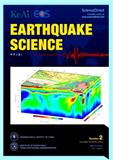
地震学报(英文版)(Earthquake Science) 知网万方维普
- 高T2
- 主管单位:
中国科学技术协会
- 主办单位:
中国地震学会、中国地震局地球物理研究所
- 国际刊号:
1672-7681;EISSN2042-0226
- 国内刊号:
11-4987/R
- 学科分类:
- 字数:
6000-18000
- 有无基金:
/有基金 100.0%
- 周期:
CN外文-双月刊
- 特殊属性:
第一批认定学术期刊,外文期刊
- 电话:
010-68729344(202202期)
- 邮箱:
equsci@126.comequsci@cea-igp.ac.cn(202202期)
- 复合因子:
0.14
- 综合因子:
0.14
- 收录:
知网,万方,维普
- 级别:
高T2
期刊简介
《地震学报》期刊已被查看: 次
更新频次
低频栏目:
2009年02期文章-20.0%-期平均发文量12篇
2009年01期文章-20.0%-期平均发文量11篇
2008年06期文章-20.0%-期平均发文量12篇
2008年05期文章-20.0%-期平均发文量12篇
2008年03期文章-20.0%-期平均发文量11篇
单位占比
其他-100.0%一作占比
/有基金-100.0%投稿指南
1、投稿方式:在线投稿。
2、刊内网址:http://www.equsci.org.cn/
投稿系统:https://www.editorialmanager.com/eqs
3、出刊日期:双月刊,逢双月出版。
2022年9月2日星期五
Earthquake Science简介
【官方微信公众号信息】
Earthquake Science(EQS)创刊于1988年,由中国地震学会与中国地震局地球物理研究所主办,主要刊登与地震科学相关的高质量原创英文文章,致力于成为中国地震研究在国际上的旗帜性刊物。刊载内容包括震源、地球结构、地震构造学、地震学新方法和新理论、强地面运动、各种地震现象、地震灾害、地震预报和预测、地震仪器、重大地震事件、地震事件或重要观察结果的记录、可用软件和数据的说明等。已被Scopus、ESCI、AJ(Russian)、Georef、Civil Engineering Abstracts、Earthquake Engineering Abstracts、知网、万方、维普等国内外重要数据库收录。
作者指南Guideline for authors
【官网信息】
About the EQS
EQS (2009-) has its root in Acta Seismologica Sinica (English edition), which is dated back to 1979. It is the only English international journal sponsored by the Seismological Society of China. The Institute of Geophysics of the China Earthquake Administration was added as a second sponsor in 2012. The first issue of the Chinese edition of the Acta Seismologica Sinica (Chinese Edition) was published in 1979, and that of the English translation was published in 1988. In 2009, the name of the journal was changed to Earthquake Science. The new journal only accepts and publishes its own contributions, independent from Acta Seismology Sinica (Chinese Edition). The Honorary Editor-in-Chief (EIC) Prof. Yun-tai Chen served as a long-time EIC for the EQS.
Review process
Since 2007, Earthquake Science (EQS) has been co-published by Springer. Each manuscript submitted to the journal is peer reviewed by at least two reviewers, and then evaluated by an associate editor. The Editor-in-Chief makes the final decision based on the review comments and the associate editor’s evaluation. We strive to complete the entire review process within 3 months. Plagiarism is strictly prohibited.
Choice of double-blind peer review
Authors can choose either the normal review or the double-blind review. In the normal review process, the identities of the authors are revealed to the reviewers, but the names of the reviewers are not revealed to the authors unless the reviewers would like to be identified.
In the double-blind review, neither the authors nor the reviewers are identified. In this case, authors are requested to submit the following. 1) A blinded manuscript that does not include any author names and affiliations in the text or on the title page. Self-identifying citations and references in the article text should be avoided. 2) A separate information page is required, which contains the title, all author names, affiliations, and the contact information of the corresponding author. Any acknowledgements, disclosures, or funding information should also be included on this page.
Open access and page charges
EQS is an Open Access (OA) journal, which means once the papers are published, anyone can download and read them free of charge from the journal website. Publication fees (or page charges) may be waived upon request.
Authorship and readership
As the flagship journal of the Seismological Society of China, it attracts wide readership and impact in China. However, it is also an international journal that draws growing attention from seismologists and geophysicists worldwide. Besides China, the manuscript contributions come from the US, Japan, Australia, Iran, India, Indonesia, Spain, Turkey, Canada, France, Russia, Italy, Greece, Colombia, Germany, and other countries.
Manuscript submission
Manuscript must contain original research that has not been published before or under consideration by other journals. The submission has been approved by all co-authors and no one who has contributed significantly to the manuscript is omitted. The publisher will not be held legally responsible should there be any claims for compensation.
Permissions and reuse of published materials
Reuse of published materials (in print or online) is permissible if permission from the copyright owner(s) of the materials is obtained.
Language editing
Manuscripts that are accepted for publication will normally be checked by our copy editors for spelling and formal style. This may not be sufficient if English is not your native language and substantial editing may be required. In that case, you may want to ask a native speaker to help you or have your manuscript edited by a professional language editor prior to submission.
Manuscript preparation and submission
Authors should submit their manuscripts online using the hyperlink “Submit online” or click here (https://www.editorialmanager.com/eqs/default1.aspx) and upload all of your manuscript files following the instructions given on the screen.
Submit a single word file (preferred) or pdf file including all text and figures tables for review. Separate files for Supplementary Information are allowed. During the review process, authors can prepare their manuscript in any format. However, some guidance is provided below. In the final production, uniform formatting and editorial policies will be implemented.
Cover page (in the online system)
Text format
A Word file is preferred for the submitted manuscript with a fontsize 11 pt or bigger. Please see the Word Manuscript Template provided under Download Center of this website.
Title page
The title page should include:
- title
- author names
- The affiliation(s) and address(es) of the author(s)
- The e-mail address and telephone number of the corresponding author
Key Points
List up to 5 highlights, limited to 200 characters (with spaces) for each item.
Abstract
The abstract should be a single-paragraph. A good abstract sets the general question or topic that you are studying for the general reader, provides background on the specific question or problem, briefly describes key data or analyses, and describes the key results and uncertainties. Please avoid acronyms or if used, define them.
Authors are encouraged to provide a Chinese version of Key Points and Abstracts or it will be provided by the journal at the time of the publication.
Keywords
Please provide at least 3 keywords that can be used for indexing purposes.
The remaining body of the manuscript should include the following sections:
Introduction
The main text should start with an introduction. Except for short manuscripts (such as short notes, opinions, comments and replies), the text should be divided into sections, each with its own heading. Sections are numbered (1, 2, 3, etc.). A maximum of four levels of heads may be used, with subsections numbered 1.1., 1.2.; 1.1.1., 1.2.1; 1.1.1.1., and so on. Headings should be sentence fragments.
Data and Methods, or descriptive headings about data and methods
Results, or a descriptive heading about the results
Conclusions
(All figures and tables should be cited in order. For initial submission, we suggest embedding figures, tables, and their captions within the main text near where they are cited.)
References should use a name-date format, not numbers. Enclose citations in parentheses as in: (Ouzounov, 2011) or Ouzounov (2011), and Sens-Schönfelder and Larose (2011). Chinese authors are cited with abbreviation of the full given name: e.g., Yang HF (2015), Niu FL and Li J (2011), Sun XL et al. (2010), rather than Yang (2015), Niu and Li (2011) and Sun et al. (2010), respectively.
Acknowledgments, Samples, and Data
The text ends with an acknowledgment section and statement that includes:
• Any real or perceived financial conflicts of interests for any author that can bias the results, interpretation, and conclusions in the paper
• Other affiliations for any author that may be perceived as having a conflict of interest with respect to the results of this paper.
• A statement that indicates to the reader where the data supporting the conclusions can be obtained (for example, in the references, tables, supporting information, and other databases).
• If the data is confidential, please have an explicit statement about confidentiality of the data.
Supporting Information
Supporting Information (SI) is allowed, which will be posted online. The authors are responsible for the SI, which will not be edited by the journal office. The authors are also welcome to post a version of the manuscript in Chinese in the SI for the Chinese readers but it is not required.
Reference
All sources cited in text, tables, figures, and Supporting Information must appear in the main reference list, and all entries in the reference list must be cited in main text. References that are cited in supporting information should also be included in the reference list of the paper and worked into the text, so that they will be indexed and included in citation records and given credit. Data sets that are not newly reported as part of this research should also be cited in the references. New data sets or software that are deposited elsewhere with a permanent identifier should be cited.
All references must be available to readers at the time of publication; there should be no “unpublished” or “in press” references.
Examples of references:
Ouzounov D, Pulinets S, Romanov A, Romanov A, Tsybulya K, Davidenko D, Kafatos M, and Taylor P (2011). Atmosphere-ionosphere response to the M9 Tohoku earthquake revealed by multi-instrument space-borne and ground observations: Preliminary results. Earthq. Sci., 24, 557–564. https://doi.org/10.1007/s11589-011-0817-z.
Sens-Schönfelder C and Larose E (2010). Lunar noise correlation, imaging and monitoring. Earthq. Sci., 23, 519–530. https://doi.org/10.1007/s11589-010-0750-6.
Yang HF (2015). Recent advances in imaging crustal fault zones: A review. Earthq. Sci., 28(2), 151–162. https://doi.org/10.1007/s11589-015-0114-3.
Niu, FL and Li J (2011). Component azimuths of the CEArray stations estimated from P-wave particle motion, Earthq. Sci. 24, 3–13. https://doi.org/10.1007/s11589-011-0764-8.
Sun XL, Song XD, Zheng SH, Yang YJ, and Ritzwoller MH (2010). Three dimensional shear wave velocity structure of the crust and upper mantle beneath China from ambient noise surface wave tomography. Earthq. Sci., 23, 449-463. https://doi.org/10.1007/s11589-010-0744-4.
Electronic figure submission
Supply all figures electronically.
Indicate what graphics program was used to create the artwork.
For vector graphics, the preferred format is EPS; for halftones, please use TIFF format. MS Office files are also acceptable.
Vector graphics containing fonts must have the fonts embedded in the files.
Name your figure files with "“Fig"” and the figure number, e.g., Fig1.eps.
Figure numbering
All figures are to be numbered and cited sequentially.
Sub-figures should be denoted by lowercase letters (a, b, c, etc.).
If an appendix appears in your article/chapter and it contains one or more figures, continue the consecutive numbering of the main text. Do not number the appendix figures, “A1, A2, A3, etc.” Figures in online appendices (Electronic supplementary Material) should, however, be numbered separately.
Figure captions
Each figure should have a concise caption describing accurately what the figure depicts. Include the captions in the text file of the manuscript, not in the figure file.
Figure captions begin with the term Fig. in bold type, followed by the figure number, also in bold type.
No punctuation is to be included after the number, nor is any punctuation to be placed at the end of the caption.
Identify all elements found in the figure in the figure caption; and use boxes, circles, etc., as coordinate points in graphs.
Identify previously published material by giving the original source in the form of a reference citation at the end of the figure caption.
Permissions
If you include figures that have already been published elsewhere, you must obtain permission from the copyright owner(s) for both the print and online format. Please be aware that some publishers do not grant electronic rights for free. In such cases, material from other sources should be used.
Accessibility
In order to give people of all abilities and disabilities access to the content of your figures, please make sure that
All figures have descriptive captions (blind users could then use a text-to-speech software or a text-to-Braille hardware).
Patterns are used instead or in addition to colors for conveying information (color-blind users would then be able to distinguish the visual elements).
Any figure lettering has a contrast ratio of at least 4.5:1.
Copyright transfer
Authors will be asked to transfer copyright of the article to the Publisher (or grant the Publisher exclusive publication and dissemination rights).
Open Choice articles do not require transfer of copyright as the copyright remains with the author. In opting for open access, the author(s) agree to publish the article under the Creative Commons Attribution License.
Offprints
Offprints can be ordered by the corresponding author.
Color illustrations
Online publication of color illustrations is free of charge. For color in the print version, authors will be expected to make a contribution towards the extra costs.
Proof reading
The purpose of the proof is to check for typesetting or conversion errors and the completeness and accuracy of the text, tables and figures. Substantial changes in content, e.g., new results, corrected values, title and authorship, are not allowed without the approval of the Editor.
After online publication, further changes can only be made in the form of an Erratum, which will be hyperlinked to the article.
Online first
The article will be published online after receipt of the corrected proofs. This is the official first publication citable with the DOI. After release of the printed version, the paper can also be cited by issue and page numbers.
Terminology
• Please always use internationally accepted signs and symbols for units (SI units).
• Please use the standard mathematical notation for formulae, symbols etc.: Italic for single letters that denote mathematical constants, variables, and unknown quantities Roman/upright for numerals, operators, and punctuation, and commonly defined functions or abbreviations, e.g., cos, det, e or exp, lim, log, max, min, sin, tan, d (for derivative) Bold for vectors, tensors, and matrices.
Ethical standards
Manuscripts submitted for publication must contain a statement to the effect that all human and animal studies have been approved by the appropriate ethics committee and have therefore been performed in accordance with the ethical standards laid down in the 1964 Declaration of Helsinki and its later amendments. It should also be stated clearly in the text that all persons gave their informed consent prior to their inclusion in the study. Details that might disclose the identity of the subjects under study should be omitted.
The editors reserve the right to reject manuscripts that do not comply with the above-mentioned requirements. The author will be held responsible for false statements or failure to fulfill the above-mentioned requirements.
Conflict of interest
Authors must indicate whether or not they have a financial relationship with the organization that sponsored the research. They should also state that they have full control of all primary data and that they agree to allow the journal to review their data if requested.
Therefore the manuscript must be accompanied by the “Conflict of Interest Disclosure Form”. To download this form, please follow the hyperlink on the right.
Ethical responsibilities of authors
This journal is committed to upholding the integrity of the scientific record. As a member of the Committee on Publication Ethics (COPE) the journal will follow the COPE guidelines on how to deal with potential acts of misconduct.
Authors should refrain from misrepresenting research results which could damage the trust in the journal and ultimately the entire scientific endeavour. Maintaining integrity of the research and its presentation can be achieved by following the rules of good scientific practice, which includes:
The manuscript has not been submitted to more than one journal for simultaneous consideration.
The manuscript has not been published previously (partly or in full), unless the new work concerns an expansion of previous work (please provide transparency on the re-use of material to avoid the hint of text-recycling (“self-plagiarism”)).
A single study is not split up into several parts to increase the quantity of submissions and submitted to various journals or to one journal over time (e.g. “salami-publishing”).
No data have been fabricated or manipulated (including images) to support your conclusions.
No data, text, or theories by others are presented as if they were the authors own (“plagiarism”). Proper acknowledgements to other works must be given (this includes material that is closely copied (near verbatim), summarized and/or paraphrased), quotation marks are used for verbatim copying of material, and permissions are secured for material that is copyrighted.
Important note: the journal may use software to screen for plagiarism.
Consent to submit has been received from all co-authors and responsible authorities at the institute/organization where the work has been carried out before the work is submitted.
Authors whose names appear on the submission have contributed sufficiently to the scientific work and therefore share collective responsibility and accountability for the results.
In addition:
Changes of authorship or in the order of authors are not accepted after acceptance of a manuscript.
Requests to add or delete authors at revision stage or after publication is a serious matter, and may be considered only after receipt of written approval from all authors and detailed explanation about the role/deletion of the new/deleted author. The decision on accepting the change rests with the Editor-in-Chief of the journal.
Upon request authors should be prepared to send relevant documentation or data in order to verify the validity of the results. This could be in the form of raw data, samples, records, etc.
If there is a suspicion of misconduct, the journal will carry out an investigation following the COPE guidelines. If, after investigation, the allegation seems to raise valid concerns, the accused author will be contacted and given an opportunity to address the issue. If misconduct has been proven, this may result in the Editor-in-Chief’s implementation of the following measures, including, but not limited to:
If the article is still under consideration, it may be rejected and returned to the author.
If the article has already been published online, depending on the nature and severity of the infraction, either an erratum will be placed with the article or in severe cases complete retraction of the article will occur. The reason must be given in the published erratum or retraction note.
The author’s institution may be informed.
Tables
• For each table, please supply a table caption (title) explaining the components of the table.
• All tables are to be numbered by Arabic numerals.
• Tables should be always cited in text in consecutive numerical order.
Identify any previously published material by giving the original source in the form of a reference at the end of the table caption.
Footnotes to tables should be indicated by superscript lower-case letters (or asterisks for significance values and other statistical data) and included beneath the table body.
《地震学报》同类天文地球科学期刊
-
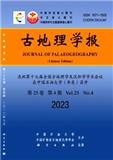
古地理学报
北核,CSCD,科核,武A,高T1
CN中文-双月刊影响因子2.974
-
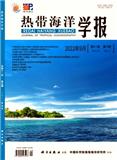
热带海洋学报
北核,CSCD,科核,高T2,武B+
CN中文-双月刊影响因子0.978
-
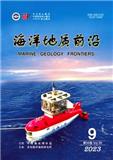
海洋地质前沿(原:海洋地质动态)
北核,CSCD,科核,高T2
CN中文-月刊影响因子1.113
-
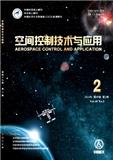
空间控制技术与应用
北核,CSCD,科核,武B+
CN中文-双月刊影响因子1.174
-
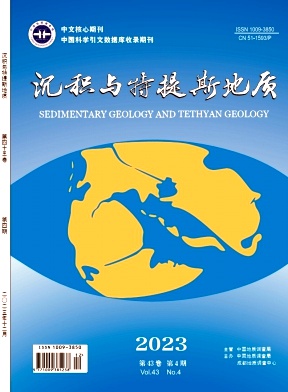
沉积与特提斯地质
北核,科核,CSCD扩,高T2,武B+
CN中文-季刊影响因子2.266
-
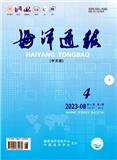
海洋通报
北核,CSCD,科核,高T2,武B+
CN中文-双月刊影响因子1.295
-
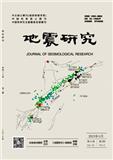
地震研究
北核,科核,CSCD扩,高T2,高T3,CACJ-核心
CN中文-季刊影响因子1.467
-
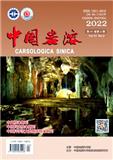
中国岩溶
北核,科核,CSCD扩,高T2,武B+
CN中文-双月刊影响因子1.833
常见问题
-
地震学报杂志社官网、联系方式是什么?
地震学报杂志社官网:http://www.equsci.org.cn/
投稿网址:https://www.editorialmanager.com/eqs联系电话:010-68729344(202202期)
投稿邮箱:equsci@126.comequsci@cea-igp.ac.cn(202202期) -
地震学报杂志是核心期刊么?
地震学报不是核心期刊,级别是:高T2, 是:天文地球科学分类下的知网,万方,维普收录的期刊。
-
请问你们是地震学报杂志社吗?
我们不是《地震学报》杂志社。本站主要从事期刊信息展示与期刊推荐,不是任何杂志官网,直投稿件请联系杂志社。本站仅提供免费的学术指导、论文辅导、期刊投稿信息整理收集服务。
-
你们指导服务后可以保证文章被发表吗?
期刊发表的成功与否,主要取决于文章内容的质量。编辑老师会根据研究领域、创新性等多因素进行考量。我们会帮助您理解期刊的发表要求,助力提升发表几率,从而增加发表的机会。
-
晋级论文能否在报纸上发表?
在学术界,论文的发表往往被视为研究者职业发展的重要一环。晋级论文,即为了获得更高职称或学术地位而撰写的学术论文,通常需在专业期刊上发表。然而,许多人可能会问
